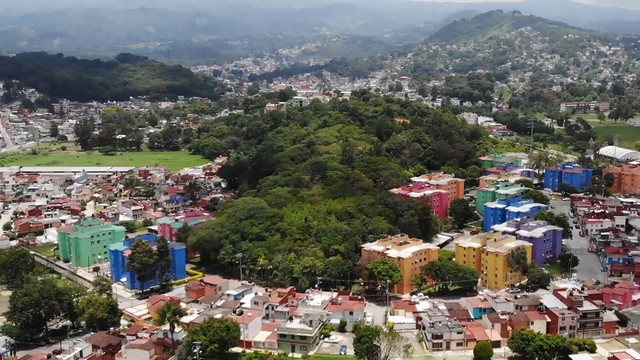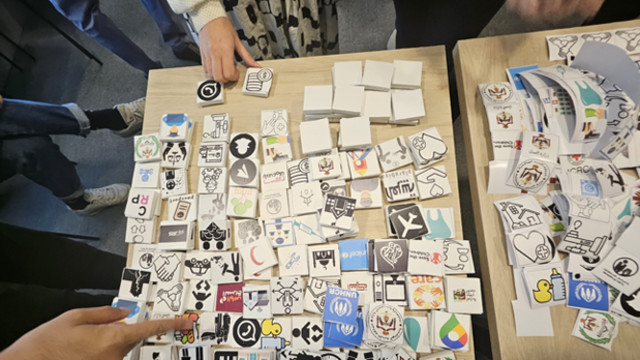Revealing the hidden refugees in African cities
A growing number of refugees and displaced people are living in cities in East Africa and the Horn of Africa – but governments are slow to recognise and meet their needs.


Refugees arriving in informal settlements, such as this one in Kibera, Nairobi, Kenya, face even more challenges than existing habitatants to access to services, such as language barriers (Photo: Eoghan Rice/Trócaire)
The extent of the refugee crisis in the Middle East keeps Western media attention focused on arrivals in Europe and other well-resourced countries, making it easy to forget the large number of people moving within and between nations elsewhere.
In East Africa and the Horn of Africa, countries already struggling to meet the needs of their people find themselves coping with large numbers of people fleeing from elsewhere – with an increasing proportion settling in towns and cities.
Last week, IIED and the International Rescue Committee (IRC) brought together local and international NGOs, UN agencies, and governments from the region to discuss how to collaborate, manage competing priorities, and identify innovative approaches to supporting displaced people.
In contrast to the situation in the Middle East, most of East Africa's refugee population remain living in camps. Of Kenya's 550,000 refugees, just 64,000 are registered with the UN High Commissioner for Refugees (UNHCR) as living in urban centres (according to UNHCR's Statistical Summary for Kenya on 31 March 2016).
In Uganda, approximately 76,000 refugees and asylum seekers – only around one in seven of the national total – are in Kampala (UNHCR's Statistical Summary for Uganda on 1 April 2016). Up-to-date figures for Tanzania are elusive, but estimates in 2011 suggested that up to 20,000 refugees resided in Dar es Salaam.
Why offer more in urban areas?
Despite the relatively small proportions of refugees who make it to urban centres, there are good reasons why this group should receive stronger support from policymakers and governments.
First and foremost, they represent a considerable number of vulnerable people. Without official status, refugees frequently face language barriers, difficulties in earning decent livelihoods, and exclusion from access to services. But if global ambition that 'no one will be left behind' is to be realised, their needs and priorities must be acted on.
Second, it is likely that the numbers are underestimated. With many governments failing to recognise or support urban refugees, there are strong disincentives to being counted – ranging from discrimination to forced removal by the authorities.
Third, the trend towards growing numbers of refugees and internally displaced people (IDPs) living in cities is likely to continue, meaning that policies and programming should be better prepared to manage this situation well in the future.
A mixed welcome
The situation for refugees varies from country to country, and is changing. Although the government of Uganda does not directly provide accommodation or material assistance to refugees living in Kampala, the Refugee Act 2006 does allow refugees to choose where they live, and guarantees them the right to work, own property, attend school and move freely within the country.
In contrast, the government of Kenya passed the Relocation of Urban Refugees to Officially Designated Camps Order in 2013. While refugees or asylum seekers living outside camps or in urban areas in Tanzania are not officially recognised, the government is currently developing an 'Alternatives to Camps' policy.
The varying unofficial attitudes towards urban refugees also have a significant impact on their wellbeing: while some refugees in Kenyan cities have experienced xenophobia, practitioners working in the region suggest that the Ugandan population is more welcoming.
The challenge for local authorities
With more refugees and IDPs settling in towns and cities, local authorities have an increasing role to play. There is a significant deficit in basic services – including shelter, water and sanitation – in many urban centres in the region, and refugees are likely to live in informal settlements lacking these.
Providing these services requires engagement with and commitment by local governments, yet their financial and technical capacities are already significantly stretched.
The challenge, therefore, is for local and international NGOs, and the official humanitarian system, to develop new approaches to meeting the needs of East Africa's urban refugees and IDPs. It will require closer partnership with local and national governments, who are currently seen more as targets for advocacy than as partners in developing and implementing solutions.

And it will require new ways of engaging with the intended beneficiaries. Effective local development in urban areas is often based on established grassroots organisations who can effectively represent their members’ interests.
However, refugee and IDP groups may not yet have had the opportunity for these types of social networks to form and operate effectively, and may need support to do so – how best to do so was also discussed at the IIED and IRC workshop.
Linking local needs to global ambitions
Meeting the needs of refugees and IDPs in urban areas reflects emerging global commitments to realise the rights of all urban residents, as reflected in the Sustainable Development Goals, the Habitat III process, and this month's World Humanitarian Summit.
Recognising those seeking protection as citizens who contribute to urban economies and societies is an important starting point.
It will require building evidence and developing new discourses – studies have already shown a multiplier effect in city economies when refugees receive cash transfers, while elsewhere they can fill particular skills gaps – for example, Burundian refugees who are trained teachers can meet the need for French teachers in Tanzanian schools.
These examples help to demonstrate that assisting refugees and supporting existing residents of low-income and informal settlements is not a zero-sum game: meeting the needs of the most vulnerable and marginalised urban residents can help to ensure that all citizens receive access to the services that they need to contribute effectively to city economies and societies.
David Dodman (david.dodman@iied.org) is director of IIED's Human Settlements Group



